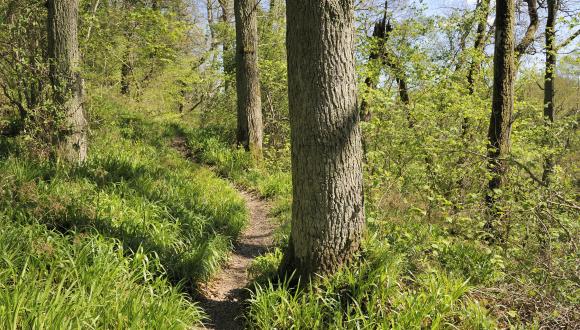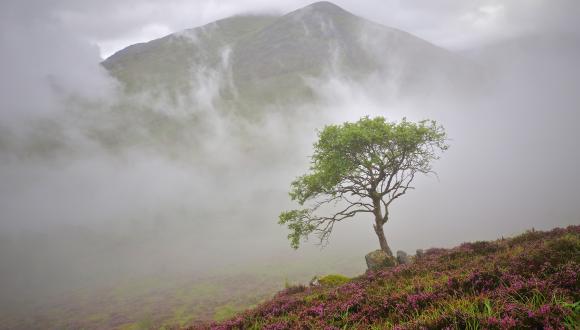National Nature Reserve Partnership - New applicants FAQ
Frequently Asked Questions - for landowners and managers
Updated: 2022
What are NNRs?
Scotland’s National Nature Reserves are some of the best places for people to discover the best of Scotland’s nature. Scotland has a great diversity of wildlife and wild places, and many nature reserves – to the best of which the NNR Partnership has awarded the National Nature Reserve accolade in recognition of the outstanding quality of their nature and management. You can find details of all these great places on Scotland’s National Nature Reserves website.
Who’s in the NNR Partnership?
The Partners are representatives of existing NNR providers together with representatives of other land management interests. The existing providers are Forestry and Land Scotland, National Trust for Scotland, NatureScot, RSPB Scotland, Scottish Wildlife Trust, South Lanarkshire Council and Woodland Trust Scotland. The other representatives are from Community Land Scotland and Scottish Land and Estates. Currently, NatureScot chairs the Partnership and provides secretariat support.
What is the NNR accolade?
Recognition that a site and its management reach the demanding standards set out by the NNR Partnership, in its criteria and standards. Originally, NNR was a protective designation. However, this function is now provided by statutory protected area designations, through ownership or some form of agreement over land. Many NNRs include land under one or more statutory designation, but this is not necessary to be considered for the NNR accolade.
Will award of the NNR accolade open the way for other designations?
No. Consideration of your land as an NNR would be by the Partnership members and completely independent of any consideration by others for other designations.
I’m a private landowner. Could I operate an NNR?
Yes. Whilst public bodies and/or environmental NGOs currently provide most NNRs, often on private land under some form of agreement or lease, these are not the only ‘models’. The NatureScot Board, when setting out the current policy for NNRs, clearly indicated an aspiration for a wider range of NNR providers – including public, private, community and voluntary organisations.
How will I benefit from my land becoming an NNR?
This is something you will need to consider for yourself as the benefits, whether tangible or otherwise, will depend on your circumstances and the nature of the land. If you operate a business connected with the land and which depends on visitors, then the NNR accolade and associated promotion and quality assurance could lend support.
Do I have to produce a management plan and, if so, what should it look like?
All NNRs have to be well managed and some form of management plan is a widely accepted means by which to implement this and share your intentions with others. There is no fixed length or format, but any plan would be expected to describe the reserve and its various interests, identify opportunities and constraints to management and then set out a longer term vision and shorter term objectives that would move the reserve in that direction. Some organisations provide more detailed topic plans to cover, for example interpretation and signage, visitor management or for a particular habitat improvement. By way of example only, see NatureScot’s plan for Loch Fleet NNR.
Will the accolade affect the value of my land?
No, it shouldn’t do. Applying for and accepting the NNR accolade is entirely voluntary on your part and does not bind future owners of the land.
What will it cost me to manage my land as an NNR?
This will depend on the nature of the land, existing facilities and your aspirations. There will be some costs associated with, for example, adopting the NNR brand on at least a few signs.
Will I be subject to any additional liabilities if my land becomes an NNR?
Not as a direct consequence of being awarded the NNR accolade – but you may incur additional liabilities associated with any new buildings or facilities you provide.
How many car park spaces do I have to provide?
Most NNR visitors arrive by car so some parking provision will be needed, but there is no set standard. You will likely have some idea of the appeal and capacity of your site and the appropriate level of provision. NNR partners will be willing to share their experience.
Do I need to have a visitor centre?
No. Whilst some NNRs have well visited centres (Beinn Eighe, Loch Leven-RSPB, Clyde Valley Woodlands – SWT Falls of Clyde), others have unstaffed orientation/ interpretation hubs or hides (Forvie, Insh Marshes, Tentsmuir), various interpretation panels at key points (Loch Fleet, Caerlaverock, Glen Affric) or a combination of these. Some NNRs have a presence in a nearby facility (Glen Roy NNR in the Lochaber Geoparc Hub in Roy Bridge; Abernethy Forest NNR (Dell section) in the Nethybridge Community Centre).
Do I need to provide toilets?
No. Some NNRs provide toilets (eg Glen Affric, Muir of Dinnet, St Cyrus), others direct visitors to nearby facilities (eg Glen Roy, Flanders Moss).
What signs do I have to put up?
It is important that visitors can easily find their way to and around the NNR and appropriate signage will be needed. The minimum requirement is for the main entrance sign(s) to feature the NNR brand (NNR logo and reserve name). Ideally, the brand will also be used elsewhere, such as on leaflets and websites – helping to raise awareness of Scotland’s NNRs and mutually support other NNR providers.
The NNR Logo
The NNR logo is the visual representation of the National Nature Reserve accolade and provides opportunity for NNRs to celebrate their achievement and status. The logo badges NNRs as places where people can expect a high quality and unique wildlife experience. The NNR logo guidelines set out how the logo should be used.
Will the Partnership be checking on everything that I do?
No. Whilst the NNR Partnership will periodically review the award of the NNR accolade, NNR providers are responsible for the ‘day to day’ maintenance of standards.
Do I need permission from the Partnership to carry out management operations?
No. But you will still need to meet any other requirements relating to the management of your land.
Can I still manage my land commercially?
Ongoing land management is perfectly acceptable providing it supports the special nature of the reserve and you can maintain the overall visitor experience. Commercial land management activities such as sheep grazing, forestry, fishing, deer stalking and nature tourism take place within existing NNRs.
What funding does the NNR accolade bring?
The accolade itself does not bring any funding and does not affect your eligibility for government agri-environment funding. It may elevate the priority of your land for some sources of funding and you may be invited to join a collective funding bid with other NNR providers.
Will I need to promote my national nature reserve for people to visit?
Yes. Providing the best places for people to see the best of Scotland’s nature is the key purpose of NNRs – so some promotion will be needed. All NNRs are included on the Scotland’s NNR website and Visit Scotland’s website and may feature on the Scotland’s NNR facebook page, tweets or blogs. You may promote your NNR in other ways as you see fit.
What if I change my mind?
Whilst the Partnership will hope you maintain your NNR for many years, it recognises that things can change and you are free to withdraw from the scheme at any time.
How do I apply?
If you wish to discuss proposing your land for the National Nature Reserve accolade, please speak informally to one of the Partnership members. They and other members of the partnership will try to support you in making your application. In your application, you will be asked to explain to the Partnership how your land and management meets the NNR criteria.





